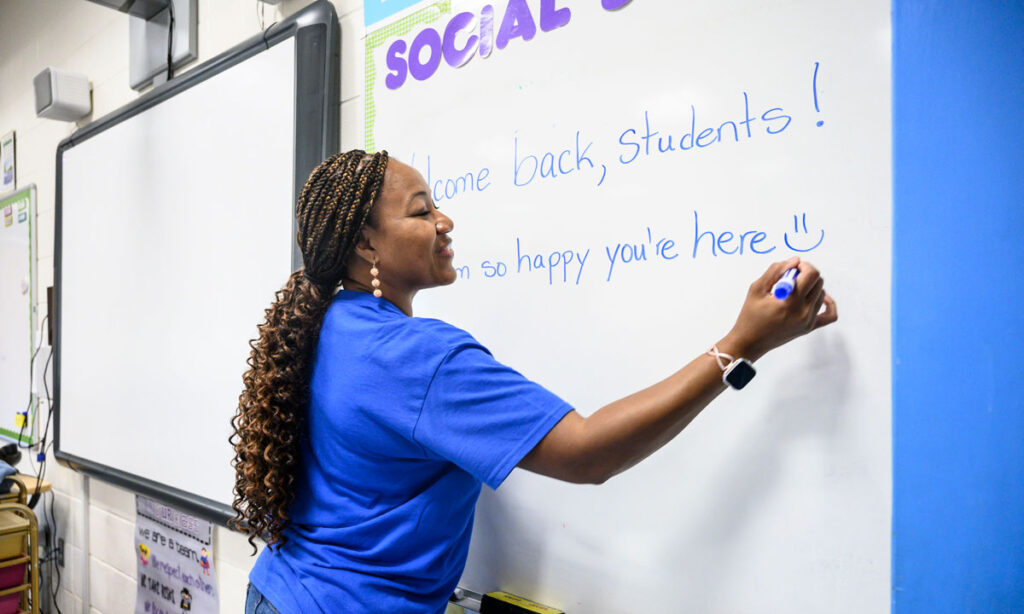Artificial Intelligence has become more than just a buzzword—it’s steadily making its way into classrooms, changing how we teach and how students learn. From grammar checks to generating quiz questions, AI tools are already aiding teachers with administrative tasks and personalised instruction. Yet, these benefits come with critical caveats: data privacy risks, algorithmic bias, and concerns about academic integrity remain ever-present.
Educators across the globe—and in Nigeria—now face a pressing mandate: how to harness AI’s potential without allowing it to overshadow the crucial human elements that define teaching. This isn’t about rejecting the future; it’s about shaping that future responsibly. Guidance from international thought leaders emphasises putting purpose first—AI must be a servant of clear educational goals, not a driver of them
Recent academic studies support this. A framework like the AI Assessment Scale (AIAS) offers tools to determine where and how AI belongs in assessment, balancing opportunity with integrity. Meanwhile, emerging research outlines essential safety guardrails—like human review and content filtering—especially vital when using AI with younger learners.
Whether in Lagos, Kano, or Abuja, educators need practical, guiding principles—not abstract theory—to use AI in ways that truly uplift teaching and learning. That’s exactly what the advice below aims to deliver.

Table of Contents
Four Key Principles for Educators Embracing AI Ethically
1. Anchor Use in Clear Educational Objectives
Before introducing AI, articulate the learning goals you aim to achieve. For example, if the goal is to enhance critical writing, use AI for grammar suggestions—but ensure the emphasis remains on students’ original thought and voice.
The World Economic Forum reminds us: purposeful AI use promotes inclusivity, equity, and student-centred learning—not distraction.
2. Make AI Use Deliberate, Not Default
Avoid sweeping AI adoption across every lesson. Instead, pilot one tool at a time. For instance, use AI to generate class summaries, letting you observe its impact and then decide on expansion.
The mantra is simple: start small, scale thoughtfully. This lets teachers gain confidence, test for unintended consequences, and reflect on whether AI truly supports learning.
3. Emphasise Transparency and Human Engagement
Be upfront with your students—clarify exactly what AI tools they may use, and how those tools should (or shouldn’t) be acknowledged in assignments. Treat AI use like other collaborative tools, with clear attribution.
This transparency builds trust—and keeps the focus on how AI is used, not merely that it is used. It enables educators to uphold academic integrity without relying on surveillance or detection tools alone.
4. Teach Students to Think, not Just Use
AI tools can be seductive, giving quick answers at a click—but that’s a recipe for over-dependence. Teach your learners to question AI outputs: Why does it say this? Is it accurate? What biases might be present?
Accompany all AI-assisted activities with reflection. In the “Human Inquiry–AI Use–Human Empowerment” (H-AI-H) approach, educators guide students to begin with a question, explore AI’s response, and ultimately reflect and refine using their own insight.

Practical Strategies for Everyday Teaching for Educators
Here are actionable, classroom-ready ideas that build upon the above principles:
- Create Concrete Examples with AI
Use AI tools to generate real-world examples for abstract concepts—like similes for complex grammar rules or scenarios for physics lessons. Always review and select the best examples, verifying accuracy and relevance. - Generate Practice Quizzes Efficiently
AI can assist in drafting low-stakes quizzes. Use prompts carefully, then refine the output and provide answer keys. This saves you time while reinforcing student learning through retrieval practice. - Prompt Students to Teach the AI
Assign topics where students explain a concept to AI, then reflect on the AI’s response. This reinforces understanding and helps them articulate their thinking clearly. - Design Authentic, Thought-Provoking Assignments
Revamp assessments to go beyond rote tasks. Consider open-ended projects that require creativity, personal connection, or real-world problem-solving. These are harder for AI to replicate and more meaningful for learners. - Scaffold AI Assignments by Level
For younger students, lean heavily on human guidance in AI activities. Older learners can be granted more autonomy—but always accompanied by reflection, citation, and ethical framing. - Foster Ethical Understanding, Not Just Utilisation
Use discussion prompts around bias: for example, ask students, “What assumptions might the AI be making about this topic?” or “Whose voices could be missing from this output?” This sharpens AI literacy in meaningful ways. - Use Frameworks Like AIAS to Inform Assessment
Apply tools like the AI Assessment Scale to determine when AI can support, enhance, or should be excluded from assignments—matched to learning outcomes.

Embracing the AI-Enabled Classroom with Confidence
As AI becomes a fixture in education, Nigerian teachers are positioned to lead—with intention, ethics, and creativity. The journey isn’t about simply adopting shiny new tools; it’s about shaping learning with clarity and care.
Our centre-stage role remains unchanged. We guide, we inspire, we challenge—and AI is a powerful assistant when situated within that framework. By focusing on Practical Advice for Educators on Using AI Responsibly in Classrooms, we ensure technology serves the heart of education—not the other way around.
Let this article be your roadmap: sustainable, reflective, and distinctly human. Remember—AI can help draft the questions, but it’s you, the educator, who lights the spark of inquiry.
Key Takeaways Recap
| Principle | What It Means in Practice |
|---|---|
| Clear Goals | Only use AI when it aligns with learning objectives. |
| Start Small | Pilot discreetly and reflect before scaling. |
| Transparency | Be explicit about AI use and document it. |
| Human-Centred | Always anchor AI activities with critical thinking and reflection. |
Join Our Social Media Channels:
WhatsApp: NaijaEyes
Facebook: NaijaEyes
Twitter: NaijaEyes
Instagram: NaijaEyes
TikTok: NaijaEyes
READ THE LATEST EDUCATION NEWS
















![Naira Marley Shocked as Fan Attacks Him On Stage During Intense Cotonou Concert [VIDEO] Niara Marley](https://naijaeyesblog.com/wp-content/uploads/2025/03/Naira-Marley-180x135.avif)























